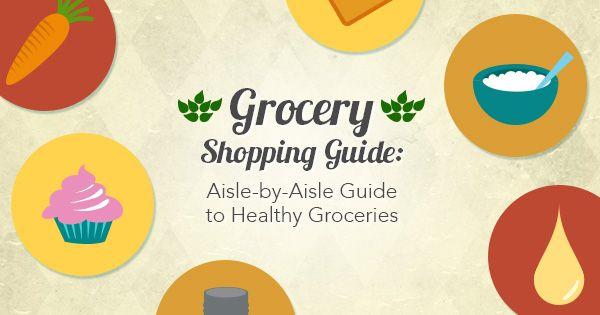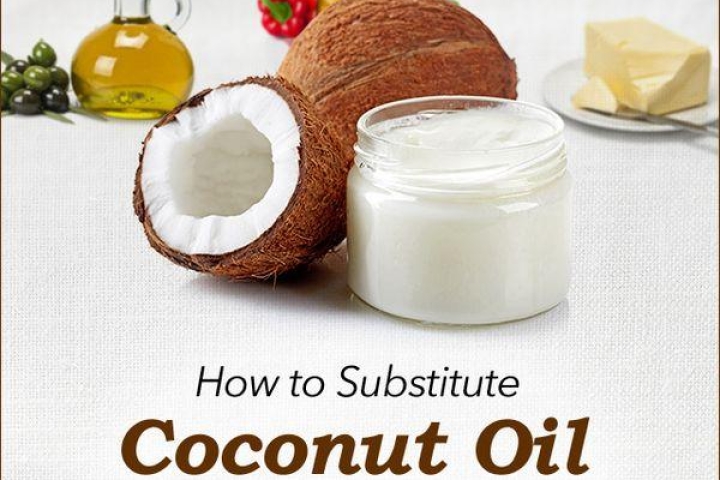Grocery Shopping Guide How to Keep Your Body Healthy & Your Wallet Fat
Give Yourself Enough Time to Shop
We often rush through our grocery shopping, perhaps picking up items after work or squeezing in an errand during a lunch break. This haste can lead us to opt for convenient processed foods, overlook ingredient lists and nutrition facts, or fail to compare prices effectively. Planning your grocery shopping in advance allows for adequate preparation and sufficient time in the store.
Healthy Shopping by Aisle
Maximize the benefits of your grocery store visits by filling your cart with healthy choices. The well-known advice to shop the perimeter of the store is beneficial as it focuses your attention on fresh produce, bulk bins, and meat, while avoiding processed snacks found in the central aisles. However, when you need items from the middle aisles, here’s how to navigate them safely and come out with a healthy, affordable grocery load.
- Produce Aisle: Opt for brightly colored fruits and vegetables like carrots, broccoli, sweet potatoes, tomatoes, and oranges, and dark leafy greens such as romaine and kale. These choices are rich in phytonutrients, antioxidants, vitamins, and minerals.
- Cereal Aisle: Choose cereals with fewer than 150 calories per cup, at least 3 grams of fiber, and no more than 8 grams of sugar per serving. Ideally, find brands offering more than 5 grams of fiber per serving.
- Snack Aisle: This aisle generally offers little in terms of healthiness. Look for granola bars with low sugar content and opt for walnuts, which are rich in heart-healthy omega-3 fatty acids. Low-fat popcorn is also a good choice, offering the benefits of whole grains and fiber.
- Baking Aisle: Select cinnamon, oregano, thyme, and cloves for their antimicrobial properties. Olive oil is another excellent staple due to its monounsaturated fats and omega-3 fatty acids.
- Canned Goods Aisle: Examine ingredient lists for added sugars, artificial sweeteners (Splenda® logo), and sodium. Opt for fruits packed in 100% fruit juice rather than syrup and choose kidney, cannellini, or pinto beans for their protein and fiber content.
- Bakery Aisle: Select whole wheat bread, rolls, or tortillas. Whole-grain carbohydrates are more satisfying, which helps curb snacking. Ensure products are labeled "100% whole grains" to avoid those made with only a small percentage of whole grains.
- Meat & Fish Aisle: Choose free-range, hormone-free chicken, lean and grass-fed beef, and fish such as mackerel, salmon, and herring, which are high in omega-3 fatty acids.
- Frozen Aisle: Combine fresh and frozen vegetables and fruits to eat healthily and save money. If affordable, choose organic options, but don't worry if you can't.
- Dairy Aisle: Prefer organic milk or, minimally, hormone-free options if organic products are too expensive. Be wary of yogurts and smoothies that often contain high-fructose corn syrup. Instead, mix Greek yogurt with fresh fruit for added sweetness. For cheese, choose flavorful varieties like goat cheese, feta, blue cheese, or Parmesan, which are consumed in smaller quantities than regular shredded cheese.
Bonus Read: 5 Healthy Foods You Probably Haven't Given a Try (But Should)
Staples in a Healthy Pantry
Maintaining a stock of healthy foods is essential for eating well and losing weight. Begin by clearing out unhealthy items from your pantry, such as chips, cookies, candy, and other high-calorie, low-nutrient foods. Here are the top 12 items to keep in your pantry for planning healthier, more nutritious meals.
- Heart-healthy tuna: Tuna adds healthy omega-3 fats and protein to dishes like omelets, enchiladas, and vegetable dips.
- Pasta sauce: Keep marinara sauce on hand for quick meals. It can transform spuds, vegetables, and chicken breasts when topped with a sprinkle of cheese. Use it to make English muffin pizzas or add to meatloaf for extra flavor.
- Potatoes: Potatoes are low in calories and rich in fiber, vitamins, and minerals. Enjoy them baked or as fries, healthier than their deep-fried counterparts. Top a baked potato with vegetables, cheese, beans, salsa, chili, or other available toppings.
- Beans: Both dried and canned beans are cost-effective substitutes for animal protein and are excellent sources of fiber. Include them in soups, omelets, tacos, casseroles, or salads.
- Peanut butter: A source of protein and healthy fats. Opt for all-natural, organic peanut butter with just peanuts and salt. It's great with fruits like apples and bananas, on celery, in Asian sauces, smoothies, or as a dip. Mix it with hot water and a splash of soy sauce for a tasty pasta sauce or salad dressing.
- Dry pasta: Available in various shapes and colors, it helps diversify meals. Opt for whole-grain or whole-grain blend pasta for more fiber. Add it to soups and casseroles, or use it with leftover vegetables for a nutritious pasta primavera or stir-fry.
- Olive oil: The distinctive flavor of extra-virgin olive oil is perfect for dressings and pairs well with whole grains. Use it on pasta or crusty bread with tomatoes for bruschetta. Regular olive oil is ideal for sautéing. Learn more about other healthy cooking oils.
- Whole grains: Stock up on high-fiber whole grains like brown rice, couscous, bulgur, and farro. They are excellent with meat, fish, poultry, or vegetables. Quick-cooking grains like couscous and quinoa can be enhanced by cooking in stock and combining with colorful vegetables, nuts, and seeds.
- Canned tomatoes: Keep canned tomatoes ready for easy meal preparation. They are high in lycopene, vitamins A and C, and fit well in dishes like soups and casseroles. Enhance them with basil and other herbs for quick sauces.
- Nuts: Nuts are not just for parties; they are a rich source of protein, fiber, and healthy fats. Use unsalted nuts in cereals, as a meat alternative in pasta, grains, salads, or vegetables, or enjoy them with fruit, yogurt, in desserts, or as a snack on their own.
- Stock: Choose low-sodium or unsalted options for chicken, beef, and vegetable stock to enhance the flavor of your homemade dishes. Use it as a base for soups or sauces, or to enrich rice and whole grains.
- Canned and dried fruit: These are nutrient-rich, packed with antioxidants and fiber, and low in calories. Enjoy canned fruit as a snack or dessert, or over yogurt, ice cream, and waffles. Dried fruit adds flavor to salads, cereals, and fish. Mix it with nuts for a healthy snack.
Bonus Read: 5 "Healthy" Foods that are Killing Your Diet
Should You Buy Organic Foods?
The debate continues over whether the benefits of organic foods justify their cost and limited availability. Next time you visit your local grocery store or market, or even consider your next harvest, reflect on these top reasons for choosing organic.
- It leads to healthier neighbors. This is especially true for farmers living near fields where pesticides are sprayed, as organic farming eliminates this risk.
- It leads to healthier kids. Children are often exposed to diets containing pesticides more frequently than to household or school sprays, which can adversely affect their neurological development.
- Organic farming uses less energy. A study by Cornell University researcher David Pimentel shows that organic corn and soybeans require thirty percent less energy to grow than their conventionally farmed counterparts, yet yield the same amount.
- Organic farming helps mitigate global warming emissions. Research from the Rodale Institute suggests that converting all U.S. farmland to organic could reduce climate-warming carbon emissions by up to 25 percent.
- Organic produce contains more nutrients. Synthetic fertilizers can deplete nutrient levels in crops. Virginia Worthington, a clinical dietician and organic food advocate, found in her review of over 40 years of studies that organic produce generally contains higher levels of vitamin C, iron, magnesium, and phosphorus than conventionally grown produce.
7 Ways to Save Money on Your Grocery Bill
Did you know the average American family of four discards over $1,300 worth of groceries each year? Jonathon Bloom, author of American Wasteland: How America Throws Away Nearly Half of Its Food (and What We Can Do About It), points out that fruits and vegetables are the most frequently wasted foods. This often happens because they are forgotten in the refrigerator. Here are tips to prevent food waste and save money:
- Make a list. Adhere to it to avoid being tempted by promotional displays or items at eye level in stores.
- Plan your meals. Taking time to plan ensures that the items on your list are necessary and won’t go to waste.
- Be a coupon skeptic. Avoid overspending on items just because you have a coupon. Reflect on whether you would purchase the item without it.
- Don’t shop while you’re hungry. You’re more likely to buy calorie-dense foods if you shop on an empty stomach.
- Buy fruits and veggies in season. They are less expensive and tastier. Opt for frozen options when fresh produce is out of season.
- Go vegetarian. Skipping meat once or twice a week can reduce your grocery bill by about 25%.
- Shop alone. Shopping without a partner or children helps avoid distractions and unplanned purchases.
One more tip: Don't forget to bring and use your reusable bags!





Leave a comment